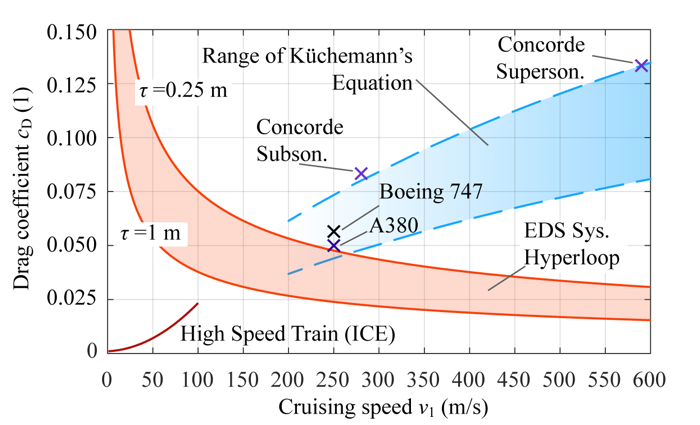Energy Efficiency of an Electrodynamically Levitated Hyperloop Pod
The team Swissloop, formed by 40 ETH students, achieved the remarkable 3rd place in 2017-finals of the SpaceX Hyperloop Pod Competition. In order to provide a scientific foundation and further improvements of a magnetically levitated “Hyperloop” vehicle (pod), a research project has been conducted at the Power Electronic Systems Laboratory.
The century-old idea of high-speed transportation in evacuated tubes has recently regained popularity. E. Musk / SpaceX proposed a concept, so called Hyperloop, which is a system comprising pods running in evacuated tubes and reducing the travel time from Los Angeles to San Francisco (563 km/350 miles) down to 35 minutes. Electrodynamic suspension (EDS) of vehicles is one of the few concepts that could operate reliably at such high speeds. It is based on the repulsive force created by an array of linear aligned magnets on the travelling vehicle and induced eddy currents in the rail of a Hyperloop tube.
In this research project conducted at the Power Electronic Systems Laboratory, D-ITET, the energy efficiency and power demand of a vehicle (or pod) travelling in the Hyperloop tube is analyzed, based on a detailed study of the electromagnetic fields using FEM simulations. Assuming that the pod is travelling in an ideally evacuated tube, the air friction can be neglected, and the drag resistance resulting from losses caused by the eddy currents and/or the power demand have been determined in analytical form. Moreover, external page parameter dependencies and scaling laws of the transportation concept have been pointed out. As one can see in the figure below, the drag resistance of a Hyperloop pod, levitated with an EDS System, decreases with speed, while the drag resistance of a conventional transportation systems increases. At a speed of 750 km/h or higher, the drag resistance of a Hyperloop system - which can be operated at significantly higher speeds than conventional high-speed trains (ICE) - is already expected to be lower than the drag of a commercial aircraft.
More information about the project can be found in the recently published research article external page Scaling laws for electrodynamic suspension in high-speed transportation.
The full article can be downloaded here.
The people involved in this project are Michael Flankl, Tobias Wellerdieck, and ESC member, Professor Johan W. Kolar.
Prof. Kolar is head of the Power Electronic Systems Laboratory (PES). The research at PES opens up new fields of applications and drives the innovation of power electronics systems in close partnership with both Swiss and international industry. In line with the focus areas of ETH Zurich, fundamentally new concepts, e.g., for sustainable energy systems, sustainable mobility, future datacenters, and medical applications, are of primary interest, along with general scientific challenges and the pursuit of excellence and an internationally leading reputation.
